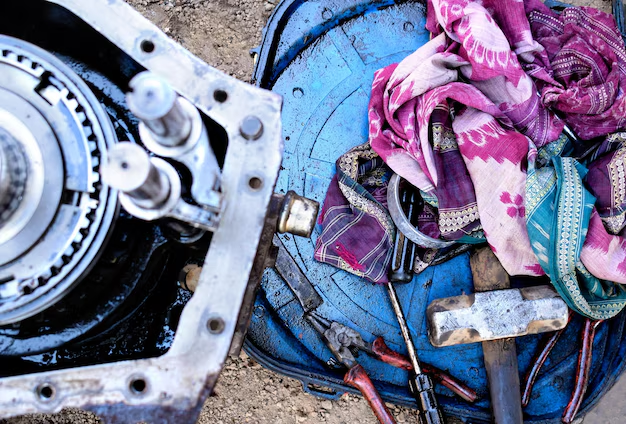What Is a Refrigerator Worth in Scrap? Unlocking the True Value
It's a question many homeowners face when upgrading their appliances or clearing out an old garage: how much is a refrigerator really worth in scrap? At first glance, it might not seem significant—an old, unused appliance. However, the hidden value in a refrigerator’s materials can turn what might appear worthless into a small profit. So, what can you realistically expect to earn when scrapping a fridge, and how can you maximize its value?
Understanding the Components: Value in Scrap Metal
Refrigerators boast a variety of components, each with its own value in the scrap market. Let's break down the key parts:
1. Copper Coils
Among the most valuable metals found in a refrigerator are its copper coils. Used extensively for the condenser and sometimes the evaporator, copper is a desirable metal in the scrap market.
2. Aluminum and Steel
The body and shelving of a refrigerator often contain aluminum and steel. While these metals don't fetch as high a price as copper, they contribute significantly to the overall scrap value.
3. Compressors
The compressor, predominantly composed of heavy metals and additional copper, can often provide a sizable portion of the scrap's worth.
4. Refrigerant
Though not typically resold, refrigerant needs safe disposal due to environmental regulations. Some scrap yards offer compensation for properly extracted and responsibly discarded refrigerants.
Market Forces: What Affects Scrap Prices?
Understanding how much a refrigerator is worth in scrap also requires awareness of market dynamics. Key factors include:
1. Market Demand
Scrap metal prices can fluctuate based on demand. When manufacturers require more recycled metal, prices increase.
2. Metal Prices
The global commodities market impacts individual metal prices, which in turn affect scrap values. Metals like copper can experience significant price shifts over time.
3. Local Economic Factors
Different regions may have varied demand for recycled materials, impacting local pricing. Check your local market to gauge current rates.
Maximizing Your Refrigerator's Scrap Value
Before jumping into scrapping your old refrigerator, consider these tips to ensure you get the most out of it:
1. Dismantle the Refrigerator
Separating the high-value metals, such as copper, from the rest of the refrigerator can often yield better returns. Doing it yourself helps avoid paying others to do it.
2. Check Refrigerant Regulations
Consult with the local waste management regulations regarding refrigerant laws. Removing refrigerant legally not only avoids potential fines but may also yield a bit of extra cash in scrap yards.
3. Compare Local Scrap Prices
Prices can vary greatly between scrap yards. Investing time in comparing local rates ensures you're getting the best deal.
4. Transport Efficiently
A full-sized refrigerator can be cumbersome. Consider renting a truck or using a suitable vehicle to safely transport larger quantities of scrap metal to maximize your return.
Practical Steps: Where to Take Your Fridge and What to Expect
1. Identify Local Scrap Yards
Local directories or online resources can help find nearby scrap yards willing to accept old refrigerators.
2. Prepare the Fridge for Scrap
Once dismantled, bundle materials like copper coils separately for easier processing at the yard.
3. Bring Proper Identification
Many scrap yards require government identification for transactions, aimed at curbing metal theft.
4. Expect a Range of Offers
Depending on your preparation and location, offers can vary. It's wise to request estimates from multiple yards if possible.
Consider Environmental Impact
While scrapping is often about financial return, environmental considerations are vital:
1. Reduce Landfill Waste
Scrapping helps divert significant quantities of metal from landfills, supporting recycling initiatives and sustainability goals.
2. Ethical Disposal of Refrigerants
Ensuring refrigerants are properly disposed of reduces greenhouse gas emissions and aligns with environmental best practices.
Summary: Key Takeaways and Tips
Scrapping a refrigerator isn't just about quick cash; it involves various considerations to maximize value and minimize environmental harm. Here’s a handy summary for quick reference:
- 💡 Components Matter: Focus on extracting copper and valuable metals.
- 📉 Watch Market Trends: Scrap prices vary; timing can be crucial.
- 🔍 Compare & Conquer: Check different scrap yards for the best rates.
- ♻️ Think Green: Prioritize environmentally friendly disposal practices.
Resource Summary 📝
- Main Components: Copper, aluminum, steel, compressors.
- Factors Affecting Prices: Market demand, metal prices, local economy.
- Maximizing Value Tips: Dismantle, check regulations, compare prices, use efficient transport.
Scraping your refrigerator can uncover more value than meets the eye. By employing these strategies and understanding market forces, you can transform an outdated appliance into both cash and a more eco-friendly footprint. Whether you're a homeowner seeking to offload appliances or simply curious, knowing the scrap worth of a refrigerator empowers you to make informed decisions.
